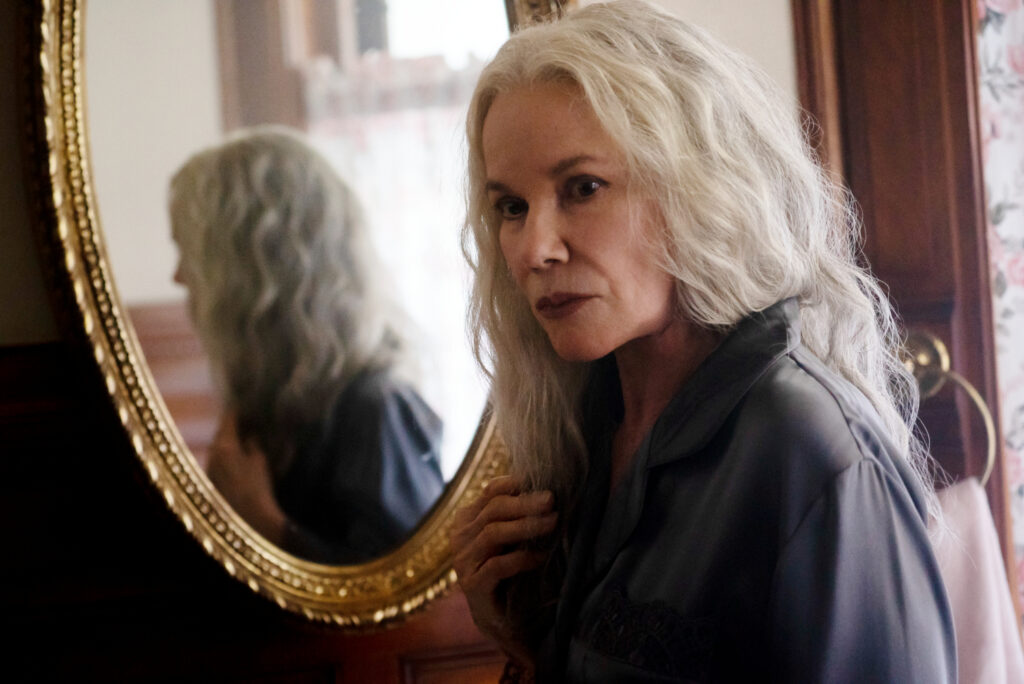Queer readings: Gender and generational divide in ‘The Manor’
Axelle Carolyn’s Blumhouse release, The Manor, is a lot more than a made-for-streaming horror movie.
Carolyn’s newest film, an Amazon and Blumhouse Television collaboration, is a deep meditation on ageism and gender and how the two can intersect — and in this intersection a peculiar and systematic loss of agency emerges.
Barbara Hershey plays a youthful 70-year-old who has given up her life as a dancer to unburden her daughter and grandson for caring for her after a stroke and early symptoms of Parkinson’s; however, neither of these conditions show symptoms and despite the protest of her punk-goth stepson, she stays in the retirement home.
Carolyn aptly pulls from classic literature for her script, particularly literature that inspired the feminist movements: the location is traditionally gothic, recalling Jane Eyre and “The Turn of the Screw,” whose racially and sexually inclusive rewrite as the television show,The Haunting of Bly Manor, she worked on; the patriarchal women, that is women who aid in the oppression of other women, populate the house as nurses and recall the mistress of Daphne du Maurier’s update of Jane Eyre, Rebecca, and the nurses of Nellie Bly’s journalist work which inspired American Horror Story: Asylum, “Ten Days in a Madhouse”; a strange tree in the forest along with a hole in the fence recall Christina Rossetti’s poem “goblin market” which critiqued the treatment of women’s bodies and capitalism; and everywhere the echoes of “The Yellow Wallpaper” can be heard — in the imagined figures, the specters, confinement to beds, mothers reduced to children, and the condescending repetition that women need to “rest.”

Carolyn has also brought hopeful elements to the work. The relationship Hershey’s character has with her grandson, for instance, suggests the hope for and possibility of intergenerational care and powerful family bonds. The gap in the fence around the property is an early suggestion that escape is possible and that it could be a rebirth. Happy memories slip through the mysterious fog the manor lays on her and recall the Logan’s Run author, George Clayton Johnson’s Twilight Zone episode, “Kick the Can” where a simple game at night in the old folks home brings youth — but that hope is part of the terror.
The feminist thread runs through the entire film, but Carolyn insists on a tense hope between gender and generation. The grandson fights to believe and support his grandmother in the face of a vast conspiracy theory while male-identified doctors, orderlies, and patients manipulate, lie, and seduce.
I’ve provided the clues, but no spoilers. Watch this gem from a bisexual forty-year-old, Axelle Carolyn now on Amazon Prime and find out what happens at The Manor!





